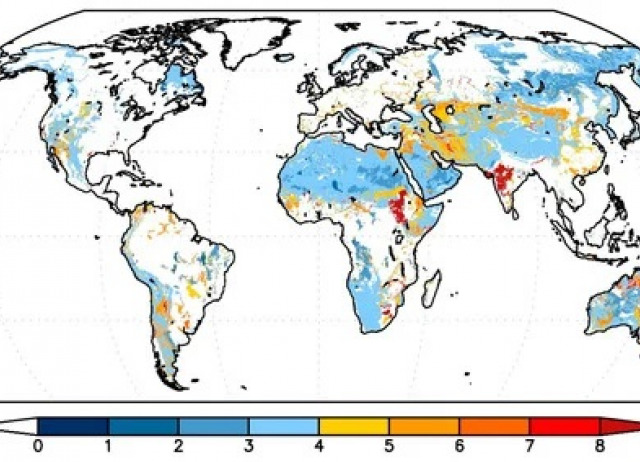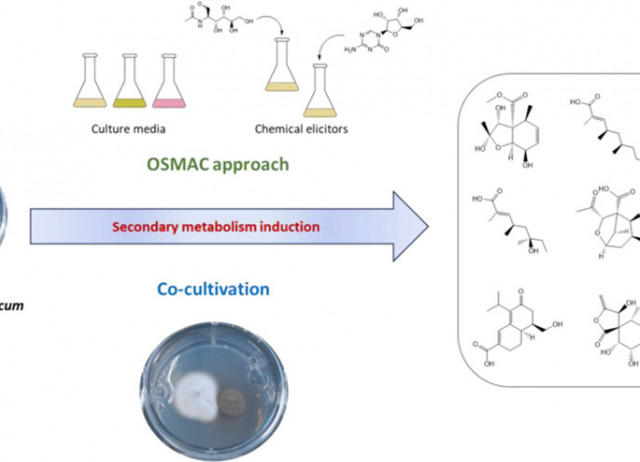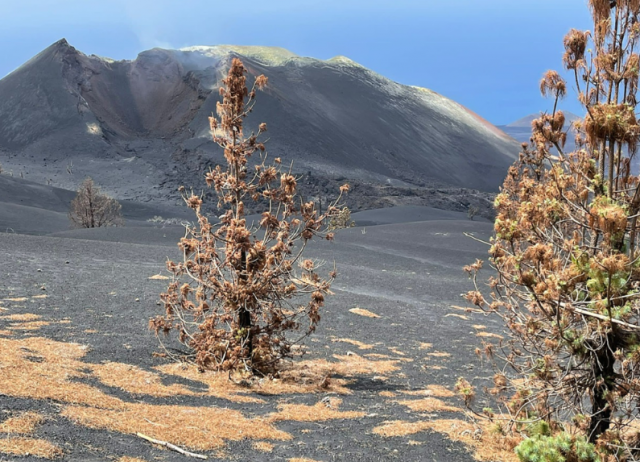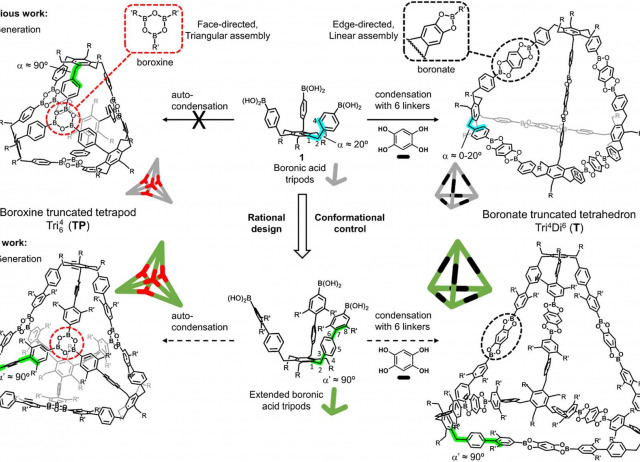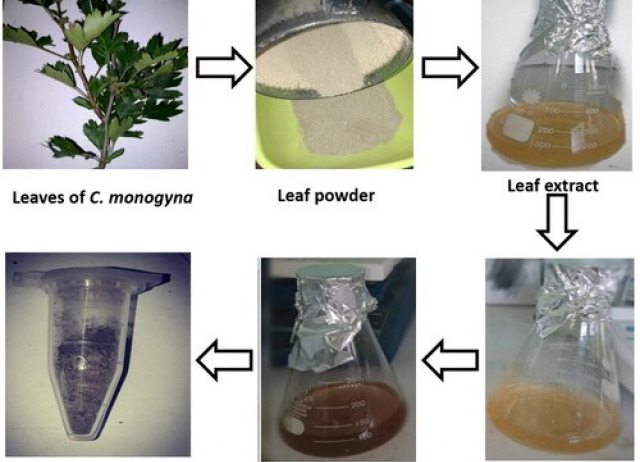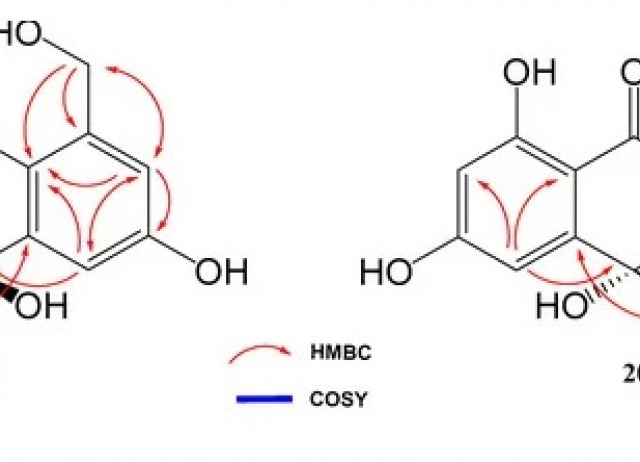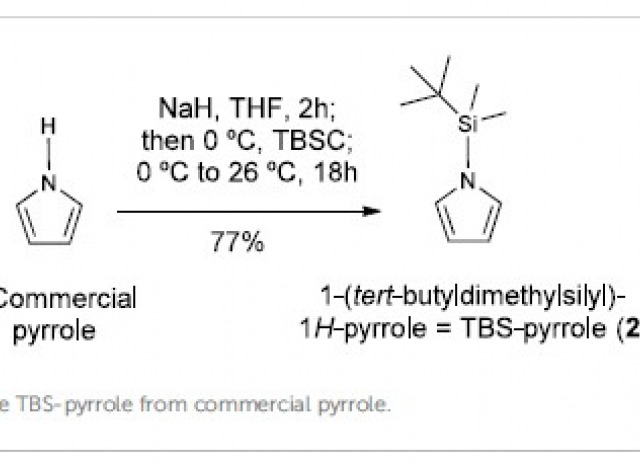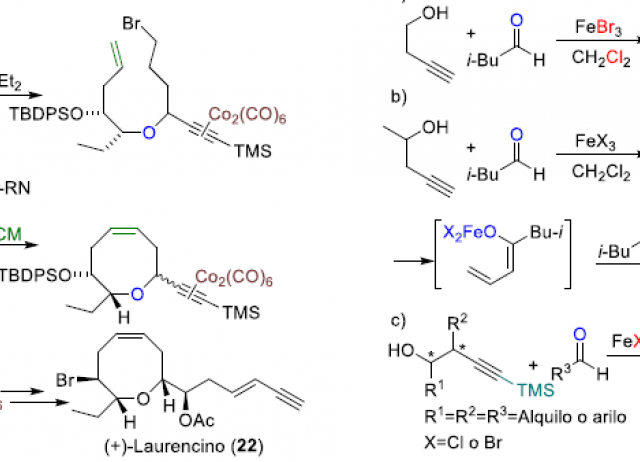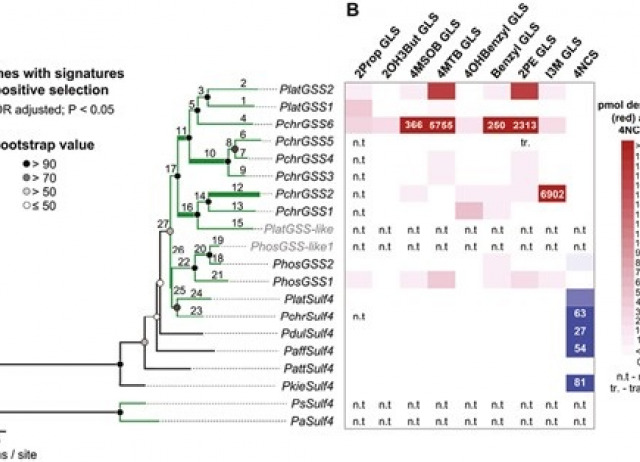
A radiation of Psylliodes flea beetles on Brassicaceae is associated with the evolution of specific detoxification enzymes
Flea beetles of the genus Psylliodes have evolved specialized interactions with plant species belonging to several distantly related families, mainly Brassicaceae, Solanaceae, and Fagaceae. This diverse host use indicates that Psylliodes flea beetles are able to cope with different chemical defense metabolites, including glucosinolates, the characteristic defense metabolites of Brassicaceae. Here we investigated the evolution of host use and the emergence of a glucosinolate-specific detoxification mechanism in Psylliodes flea beetles. In phylogenetic analyses, Psylliodes species clustered into four major clades, three of which contained mainly species specialized on either Brassicaceae, Solanaceae, or Fagaceae. Most members of the fourth clade have broader host use, including Brassicaceae and Poaceae as major host plant families. Ancestral state reconstructions suggest that Psylliodes flea beetles were initially associated with Brassicaceae and then either shifted to Solanaceae or Fagaceae, or expanded their host repertoire to Poaceae. Despite a putative ancestral association with Brassicaceae, we found evidence that the evolution of glucosinolate-specific detoxification enzymes coincides with the radiation of Psylliodes on Brassicaceae, suggesting that these are not required for using Brassicaceae as hosts but could improve the efficiency of host use by specialized Psylliodes species.
Gikonyo, Matilda W; Ahn, Seung-Joon; Biondi, Maurizio; Fritzlar, Frank; Okamura, Yu; Vogel, Heiko; Köllner, Tobias G.; Şen, İsmail; Hernández-Teixidor, David; Lee, Chi-Feng; Letsch, Harald; Beran, Franziska.
The Development of METAL-WRF Regional Model for the Description of Dust Mineralogy in the Atmosphere
The mineralogical composition of airborne dust particles is an important but often neglected parameter for several physiochemical processes, such as atmospheric radiative transfer and ocean biochemistry. We present the development of the METAL-WRF module for the simulation of the composition of desert dust minerals in atmospheric aerosols. The new development is based on the GOCART-AFWA dust module of WRF-Chem. A new wet deposition scheme has been implemented in the dust module alongside the existing dry deposition scheme. The new model includes separate prognostic fields for nine (9) minerals: illite, kaolinite, smectite, calcite, quartz, feldspar, hematite, gypsum, and phosphorus, derived from the GMINER30 database and also iron derived from the FERRUM30 database. Two regional model sensitivity studies are presented for dust events that occurred in August and December 2017, which include a comparison of the model versus elemental dust composition measurements performed in the North Atlantic (at Izaña Observatory, Tenerife Island) and in the eastern Mediterranean (at Agia Marina Xyliatos station, Cyprus Island). The results indicate the important role of dust minerals, as dominant aerosols, for the greater region of North Africa, South Europe, the North Atlantic, and the Middle East, including the dry and wet depositions away from desert sources. Overall, METAL-WRF was found to be capable of reproducing the relative abundances of the different dust minerals in the atmosphere. In particular, the concentration of iron (Fe), which is an important element for ocean biochemistry and solar absorption, was modeled in good agreement with the corresponding measurements at Izaña Observatory (22% overestimation) and at Agia Marina Xyliatos site (4% overestimation). Further model developments, including the implementation of newer surface mineralogical datasets, e.g., from the NASA-EMIT satellite mission, can be implemented in the model to improve its accuracy.
Solomos, Stavros; Spyrou, Christos; Barreto, África; Rodríguez, Sergio; González, Yenny; Neophytou, Marina K. A.; Mouzourides, Petros; Bartsotas, Nikolaos S.; Kalogeri, Christina; Nickovic, Slobodan; Vukovic Vimic, Ana; Vujadinovic Mandic, Mirjam; Pejanovic, Goran; Cvetkovic, Bojan; Amiridis, Vassilis; Sykioti, Olga; Gkikas, Antonis; Zerefos, Christos.
OSMAC Approach and Cocultivation for the Induction of Secondary Metabolism of the Fungus Pleotrichocladium opacum
The application of an OSMAC (One Strain–Many Compounds) approach on the fungus Pleotrichocladium opacum, isolated from a soil sample collected on the coast of Asturias (Spain), using different culture media, chemical elicitors, and cocultivation techniques resulted in the isolation and identification of nine new compounds (8, 9, 12, 15–18, 20, 21), along with 15 known ones (1–7, 10, 11, 14, 19, 22–25). Compounds 1–9 were detected in fungal extracts from JSA liquid fermentation, compounds 10–12 were isolated from a solid rice medium, whereas compounds 14 and 15 were isolated from a solid wheat medium. Addition of 5-azacytidine to the solid rice medium caused the accumulation of compounds 16–18, whereas adding N-acetyl-d-glucosamine triggered the production of two additional metabolites, 19 and 20. Finally, cocultivation of the fungus Pleotrichocladium opacum with Echinocatena sp. in a solid PDA medium led to the production of five additional natural products, 21–25. The structures of the new compounds were elucidated by HRESIMS and 1D and 2D NMR as well as by comparison with literature data. DP4+ and mix-J-DP4 computational methods were applied to determine the relative configurations of the novel compounds, and in some cases, the absolute configurations were assigned by a comparison of the optical rotations with those of related natural products.
Rodríguez Martín-Aragón, Víctor; Trigal Martínez, Mónica; Cuadrado, Cristina; Hernández Daranas, Antonio; Fernández Medarde, Antonio; Sánchez López, José M.
Combining in-situ monitoring and remote sensing to detect spatial patterns of volcanic sulphur impact on pine needles
Volcanic eruptions have a strong environmental impact on surrounding forests. Trees are affected by mechanical damage, tephra deposition and volcanic gases. Oceanic islands are shaped by relatively frequent volcanic eruptions and thus offer the opportunity to study the effect of volcanic activity on biodiversity. We investigate the impact of volcanic gas emissions and tephra deposition during the 2021 Tajogaite eruption on the Canary Pine forests of the island of La Palma, Spain, characterized by monospecific stands of the endemic pine species Pinus canariensis C. Sm. ex D.C. Large quantities of volcanic sulphur dioxide caused chlorotic damage up to approximately 7 km around the crater, followed by widespread resprouting of P. canariensis. To detect the spatial pattern of impacts, we sampled P. canariensis needles from all over the island of La Palma and analyzed their sulphur (S), nitrogen (N) and carbon (C) content. We found a strong increase of S needle content close to the crater, while C decreased significantly. S levels were strongly related to distance to the crater, C and N were mostly influenced by S content. Trees affected by volcanic gases allocate resources to resprouting, leading to lower levels of C due to translocation of C as a building block. Surprisingly, we found higher N levels in needles with high levels of S and a less clear pattern compared to C, likely due to a multitude of environmental factors influencing N needle levels. We investigated how canopy damage patterns detected in Sentinel-2 remote sensing imagery after the eruption correlated to the in-situ needle contents. However, we did not find a clear correlation between in-situ needle values and spectral responses in remote sensing. While satellite images were well suited to analyse large scale patterns of canopy damage following the eruption, needle levels varied strongly on a local, tree-based level, which is not reflected in remote sensing imagery.
Weiser, Frank; Walentowitz, Anna; Baumann, Esther; Shatto, Christopher; Guerrero-Campos, María; Jentsch, Anke; Nogales, Manuel; Medina, Félix Manuel; Vetaas, Ole Reidar; Beierkuhnlein, Carl.
Conformational control enables boroxine-to-boronate cage metamorphosis
The discovery of molecular organic cages (MOCs) is inhibited by the limited organic-chemical space of the building blocks designed to fulfill strict geometric requirements for efficient assembly. Using intramolecular attractive or repulsive non-covalent interactions to control the conformation of flexible systems can effectively augment the variety of building blocks, ultimately facilitating the exploration of new MOCs. In this study, we introduce a set of boronic acid tripods that were designed using rational design principles. Conformational control was induced by extending the tripod's arms by a 2,3-dimethylbenzene unit, leading to the efficient formation of a tetrapodal nanometer-sized boroxine cage. The new building block's versatility was demonstrated by performing cage metamorphosis upon adding an aromatic tetraol. This led to a quantitative boroxine-to-boronate transformation and a topological shift from tetrahedral to trigonal bipyramidal.
Rondelli, Manuel; Delgado-Hernández, Samuel; Hernández Daranas, Antonio; Martín, Tomás.
Optimization and bio-fabrication of phyto-mediated silver nanoparticles (Ag-NPs) for antibacterial potential
This report examines the bio-fabrication of silver nanoparticles (Ag-NPs) utilizing AgNO3 and leaf extract of Crataegus monogyna as the precursor material. In order to maximize the antibacterial efficacy against Staphylococcus aureus, Proteus mirabilis, Klebsiella pneumoniae and Pseudomonas aeruginosa, the reaction conditions for the green fabrication of Ag-NPs were optimized. A one factor at a time approach (volume concentration of extract, volume concentration of AgNO3, pH and temperature) was used to optimize the best condition, and results were assessed through UV-visible spectroscopy and particle size distribution. The results showed that 20 mL of plant extract, 80 mL of AgNO3, pH 08, 100 °C temperature were the optimum reaction conditions under which we obtained the smallest Ag-NPs (7 nm). The scanning electron microscopy and X-ray diffraction analysis confirmed the spherical and crystalline nature of Ag-NPs. The antibacterial activity assay demonstrated a high antibacterial effect of Ag-NPs against S. aureus, P. mirabilis, K. pneumoniae and P. aeruginosa, and that impact was greater with smaller-sized nanoparticles (7 nm). This study shows that leaf extract of C. monogyna is a possible medium for the green fabrication of Ag-NPs, and control over reaction factors can establish the characteristics and antibacterial effectiveness of Ag-NPs.
Mehmood, Ansar; Zahir, Sobia; Khan, Muhammad Abdul Rauf; Ahmad, Khawaja Shafique; Abasi, Fozia; Raffi, Muhammad; Proćków, Jarosław; Pérez de Lastra, José Manuel.
Induction of New Aromatic Polyketides from the Marine Actinobacterium Streptomyces griseorubiginosus through an OSMAC Approach
Using the OSMAC (One Strain Many Compounds) approach, the actinobacterium Streptomyces griseorubiginosus, derived from an unidentified cnidarian collected from a reef near Pointe de Bellevue in Réunion Island (France), was subjected to cultivation under diverse conditions. This endeavour yielded the isolation of a repertoire of 23 secondary metabolites (1–23), wherein five compounds were unprecedented as natural products (19–23). Specifically, compounds 19 and 20 showcased novel anthrone backbones, while compound 23 displayed a distinctive tetralone structure. Additionally, compounds 21 and 22 presented an unusual naphtho [2,3-c]furan-4(9H)-one chromophore. Interestingly, the detection of all these novel compounds (19–23) was exclusively achieved when the bacterium was cultured in FA-1 liquid medium supplemented with the epigenetic modifier γ-butyrolactone. The elucidation of the structural features of the newfound compounds was accomplished through a combination of HRESIMS, 1D and 2D NMR spectroscopy, as well as QM-NMR (Quantum Mechanical—Nuclear Magnetic Resonance) methods and by comparison with existing literature. Moreover, the determination of the relative configuration of compound 23 was facilitated by employing the mix-J-DP4 computational approach.
Rodríguez Martín-Aragón, Víctor; Romero Millán, Francisco; Cuadrado, Cristina; Hernández Daranas, Antonio; Fernández Medarde, Antonio; Sánchez López, José M.
La imperiosa necesidad de programar la asistencia a urgencias, atendiendo al cambio climático y las crisis de calidad del aire
El cambio climático y la crisis global de calidad del aire son fenómenos que están teniendo impactos en numerosos aspectos de la sociedad, incluyendo la atención médica en general y en los servicios de urgencias en particular. En 2021 la Organización Mundial de la Salud declaró que el cambio climático es “la mayor amenaza para la salud a la que enfrenta la humanidad”1, motivo por el que este organismo publicó nuevas directrices de calidad del aire, recomendando reducir drásticamente los niveles de contaminación en el aire ambiente. Recientemente, y en relación a los escenarios meteorológicos que estamos viviendo en este nuevo escenario climático, el secretario general de la ONU declaro “la humanidad ha abierto las puertas del infierno”.
Benito Lozano, Miguel; Rodríguez, Sergio.
TBS-pyrrole as an “universal” reference to quantify artemisinin and structurally-diverse natural products in plants extracts by NMR
The commercial production of artemisinin and other valuable bioactive natural products depends on their plant sources, which may provide variable amounts of the compound depending on plant variety, the period of the year, abiotic stress and other factors. Therefore, it requires a method for large-scale, low-cost natural product quantification. The standard HPLC and UHPLC methods are accurate but the analysis are costly and require different optimization for structurally-diverse products. An alternative method using NMR with TBS-pyrrole as a novel “universal” reference affords a simple, fast method to quantify many different products. The method is shown with antimalarial artemisinin, whose yield using conventional and novel extraction procedures was determined by standard UHPLC-MS procedures and by our NMR protocol, with similar quantification results. The novel reference compound does not interfere with artemisinin or extract signals, only needs a small amount of the extract, is accurate and operationally simple, and a large volume of samples can be processed in little time. Moreover, bioactive terpenes, steroids, alkaloids, aromatic compounds, and quinones, among others, were quantified in a model vegetal extract with this “universal” reference with excellent accuracy.
García-García, Ana L.; Hernández, Dácil C; Santana-Mayor, Álvaro; Jiménez-Arias, David; Boto, Alicia.
Síntesis de éteres cíclicos naturales
Se presenta un resumen de algunos métodos utilizados en la síntesis de productos naturales bioactivos de origen marino. El artículo se estructura acorde al orden en que son introducidos los enlaces más importantes en los heterociclos oxigenados. Se discute asimismo la similitud de algunos métodos sintéticos utilizados con los usados por los organismos vivos productores.
Betancort, Juan M.; Carrillo Fumero, Romen; Díaz Díaz, David; García, Celina; Martín, Tomás; Padrón, Juan I.; Padrón, José M.; Ramírez, Miguel Á.; Martín, Víctor S.
